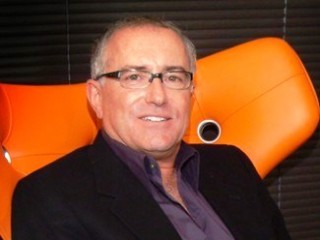
Ron Snyder biography
Date of birth : -
Date of death : -
Birthplace : U.S.A.
Nationality : American
Category : Arhitecture and Engineering
Last modified : 2011-09-13
Credited as : businessman, shoemaker, Crocs, Inc.
0 votes so far
Born in the mid-1950s, Snyder earned degrees in finance and accounting from the University of Colorado, and went on to co-found the Dii Group, an electronics manufacturing company. It was based in the Boulder County, Colorado, suburb of Niwot, and Snyder headed its global sales, marketing, and mergers and acquisitions business. An initial public offering of stock in 1993 boosted its fortunes, and seven years later Dii merged with Flextronics International. Snyder and his family remained in the Boulder area, commuting to his Flextronics office in San Jose, California, during the week.
Flextronics was the second largest electronics manufacturing services company in the world, and Snyder served as its senior vice president responsible for its global division. He retired in late 2003, and soon afterward agreed to serve as a consultant to some friends from his University of Colorado days who had started a footwear company. "I thought I'd work a few hours a day," Snyder said to Anderson in the Business 2.0 interview about agreeing to help out the Crocs founders. "I thought it would be restful."
Launched in 2002, Crocs, Inc. made a lightweight clog-style plastic shoe in several appealing colors. The original two Croc styles had holes for ventilation, were made from an odor- and water-resistant plastic resin called Croslite, and were manufactured by Foam Creations, a Canadian company. The idea for Crocs came to three Colorado friends Scott Seamans, George Boedecker, and Duke Hanson during their sailing trip together in the Caribbean, when one of them brought along a Croslite shoe; the other two judged it unattractive, but realized how ideal the material was for slippery boat surfaces. The trio signed a deal with Foam Creations to begin making the shoe in an array of vibrant colors, and decided to call the product the "Croc" in homage to the crocodile, an animal both amphibious and long-lived ideal attributes for a shoe
Crocs were introduced at the 2002 Fort Lauderdale boat show, and quickly caught on with boaters. At $30 a pair, the shoes began selling steadily across the United States in specialty retailers, and in 2003, 76,000 pairs were sold to the tune of $1.2 million. Soon after Snyder signed on as a consultant, he saw the potential for the shoe as sales soared during 2004, reaching $13.5 million more than ten times the previous year's tally. Early in 2005, he joined Crocs as its chief executive officer. "Crocs created excitement in the footwear industry," he told Footwear News journalist Emily Scardino. "We felt there was a void in the comfort footwear market. We were able to offer a new and unique product that filled that void."
One of Snyder's first important actions as CEO was to acquire Foam Creations, the Canadian manufacturer, and then replicate that machinery and assembly line elsewhere to keep up with demand. "The question is no longer why anyone would wear Crocs, but rather, is there anywhere they shouldn't be worn?" wrote Bethany McLean of Fortune about the shoe's popularity. "Celebrities like Al Pacino and Teri Hatcher wear Crocs, as do their children. Red-haired chef Mario Batali wears his orange ones on TV; movie star Adam Sandler wore his khaki ones on the red carpet . They are not so much a new category as the latest in a pantheon of ugly shoes that became a fashion phenomenon despite or maybe because of their bad looks. Think Jellies, Earth shoes, Birkenstocks, and most recently Uggs, to name a few."
Crocs were soon coming out of company-owned factories in Romania, Mexico, and even China. Snyder also hired an experienced team of senior managers, including a few former Flextronics executives. "We hired up everywhere, probably hiring people we couldn't afford," he admitted in the interview with Business 2.0 's Anderson. "But you want the right people on the bus early." He also helped Crocs acquire Jibbitz, a maker of the trinkets that younger wearers were buying to personalize the Crocs' airholes. A year after Snyder came on board, the company became a publicly traded one with an initial public offering of stock in February of 2006 on NASDAQ, trading under the ticker symbol CROX. It raised $208 million in its first day of trading, and its IPO was the richest ever for a footwear company in Wall Street history. The stock offering helped finance the company's first Crocs store, which opened in New York City in the winter of 2006-07, and also funded the patent-infringement lawsuits it was zealously pursuing against makers of copycat Crocs.
In 2007, Crocs branched out into more traditional footwear with a range of new shoes in which the beds were made from Croslite but their uppers fashioned out of leather, suede, and other materials. The new lines included sandals and athletic shoes, and were part of a long-term vision for the company shaped by Snyder. It was possible, he conceded to Kris Hudson of the Wall Street Journal , that the original Croc was a fad that would eventually tank, as many industry analysts predicted. "That might be the case, but we probably won't know that for a number of years," Snyder asserted. "By that time, Crocs will be a very large company with a lot of different brands under the Crocs umbrella."
















